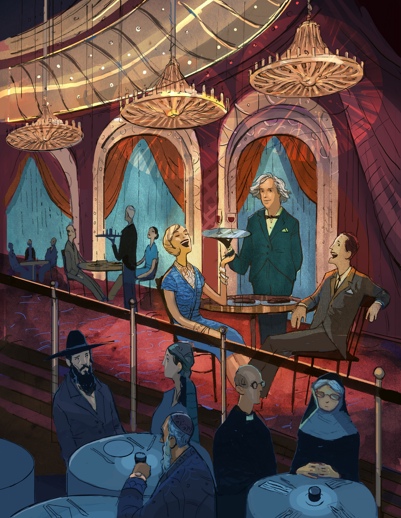Press Freedom and Responsibility

In America, when we think of racial hatred and bigotry, we tend to think of the manifestations of prejudice that surfaced in our past: the barbaric practices of slavery; the evils of the Ku Klux Klan; the acceptance of anti-Semitism and anti-Catholicism; social and political segregation of immigrant groups and the suppressive agendas born of institutionalized racism and intolerance—all of it under the noses of a free, if indifferent, press.
But racism is not some set of historical incidents, but a persistent virus, its symptoms present and all around us: Urban ghettos created by prejudicial financial practices; social and economic barriers to education, which breed a low-wage workforce and perpetuate poverty; a justice system where prison populations reflect a “majority” different than society at large.
Add to this the historic disenfranchisement of women and minorities, a still-thriving misogyny and gender bias, and you have a democracy that has failed for a good part of its existence to live up to its public declarations about equality for the majority.
We may have come a long way from lunch-counter demonstrations, marches, police riots, church bombings and racially inspired assassinations. But, as the media frenzy over Ferguson, Missouri, reminded us, we have a long road ahead if we are to recognize that the so-called American “mainstream”—the core of American values so long represented as white society—is about inclusion, not exclusion.
There is reason now, in the wake of the recent riots in Ferguson, to focus on the prejudices and predilections that come from our corporate media institutions. With the power of the press concentrated in ever-fewer hands, influenced by concerns and agendas that don’t resonate with the traditions of a healthy press, threats to racial justice and equality are now a modern media problem.
Consider for a moment one small example, the tony magazine Vanity Fair.
Under the direction of Editor Graydon Carter, Vanity Fair has earned a reputation for a narrow world view, one dominated by attention to its favored friends who, a study of the magazine shows, are overwhelmingly white.
Racism within the pages of Vanity Fair has drawn little attention from other media, though its attacks on organized religion have been controversial. Targeting Catholicism, the Pope, Mother Teresa—and VF’s later-criticized reporting on the Catholic response to Jewish persecution in Germany in World War II, are emblematic of deeper racial and exclusionist attitudes that cast shadows across the magazine’s coverage.
A content analysis of Vanity Fair’s annual Hollywood edition, the highlight of its yearly editorial calendar, shows some interesting data. In the past 20 Hollywood editions, the magazine’s covers have featured prominently some 166 white actors, and just 22 nonwhites, or a mix of 86.5 percent Caucasian to 13.5 percent nonwhite. Prior to the 2014 Hollywood edition, only four persons of color, including Barack Obama, had appeared on the cover of the Hollywood issues in those two decades. (In 2014, responding to criticisms of racial imbalance, VF put more people of color on its Hollywood cover.)
As we know, a free and uncensored press was considered vital by the Framers of the Constitution. They saw that a free press, beaconing public scrutiny to all matters of public interest, was a light that should not be extinguished. But the Framers left no press policy handbook, only a rough set of ideas that depended on moral courage and ethical conviction of publishers and journalists to pursue the truth and to adhere to responsible practices.
How is it then that the once-vaunted Fourth Estate has wandered off track, into a world where the quest for news-as-entertainment and ever-larger profits overwhelms the responsibility to reject racial separation and ethnic distrust?
What we read, what we hear, is filtered these days not through the perspective of local media owners and community interests, as it once was, but through a network of closeted private interests with the influence to shape discussions and affect public policy. In that context, racial discrimination—a white-culture bias—takes on a sinister air.
Such practices are self-defeating; having contributed to a general distrust among Americans of the media, as illustrated by a Nieman Foundation for Journalism at Harvard University study that, a decade ago, found media credibility ranked below that of almost all other major institutions. It has not rallied since.
The barons of the media boardrooms—who cloak themselves in the mantle of press responsibility and notions of good will—are operating the Fourth Estate not as a beacon of light but as a weapon in a war for economic and social power. Their pecuniary self-interest filters inexorably down to editorial offices, embodied in the likes of Graydon Carter and his sycophants, down to newsrooms and ultimately to individuals who once strived to pursue the ideals of journalism—and now greet the truth about the media itself with a wink and a nod.
We are adrift from concepts of a free—and responsible—press when subtle, insidious racism creeps into the pages of major media institutions.
Colorado-based writer and investigative reporter Dan Luzadder shared a Pulitzer Prize for General Local Reporting and is a member of the Scripps Howard Journalism Hall of Fame.






























